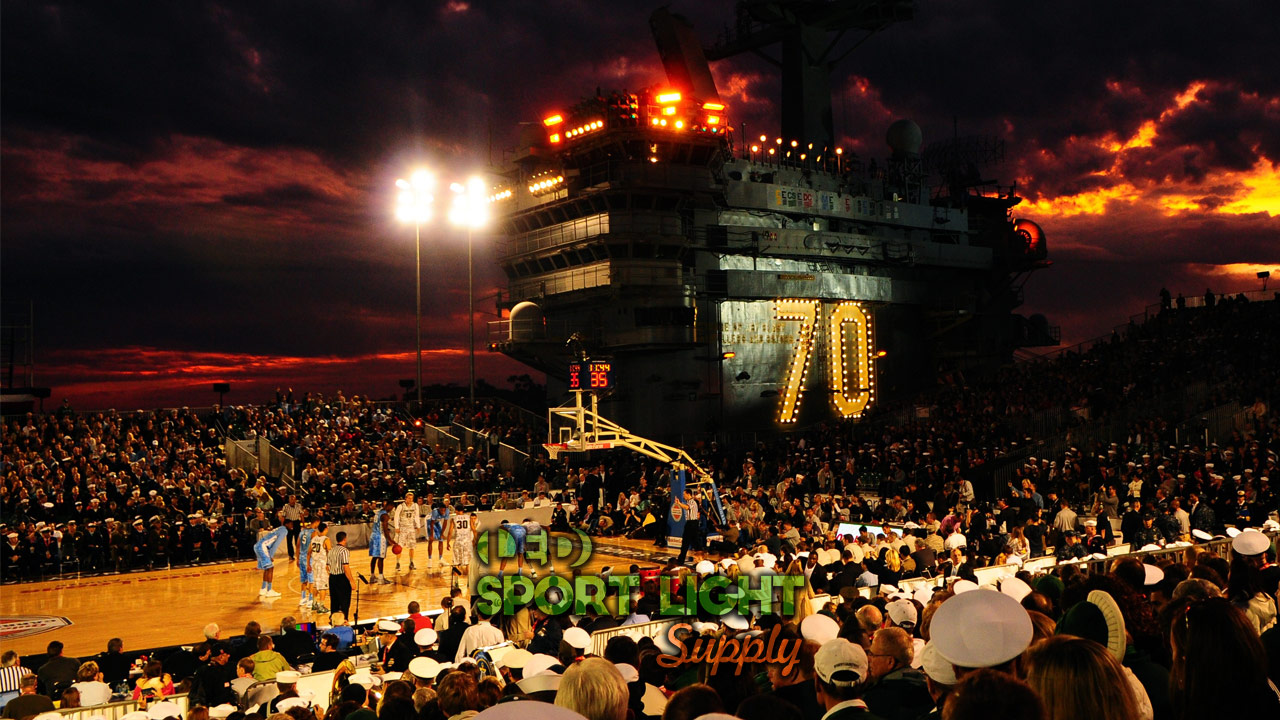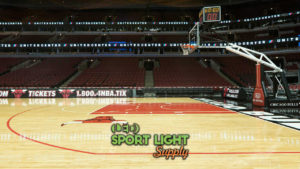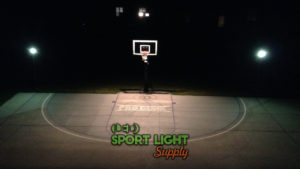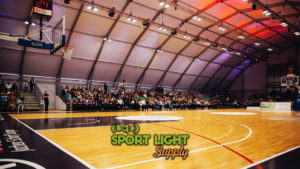Basketball court light pole height is anywhere between 10 and 35 feet. For the best results, a photometric analysis is necessary. Depending on the high mast lighting layout, the number of poles changes. This also contributes to determining a specific height instead of another.
The pros and cons of having poles that are too high or shorts are numerous. In an outdoor basketball stadium, the lighting quality influences the action in the arena. Of course, it affects the possibility of welcoming TV broadcasters as well.
The following sections will help you understand why care for the correct pole height. As the average galvanized steel pole lasts somewhere between 20 and 30 years, consider the extent of your investment for the best ROI.
Excessively high light poles near the basketball court are dangerous
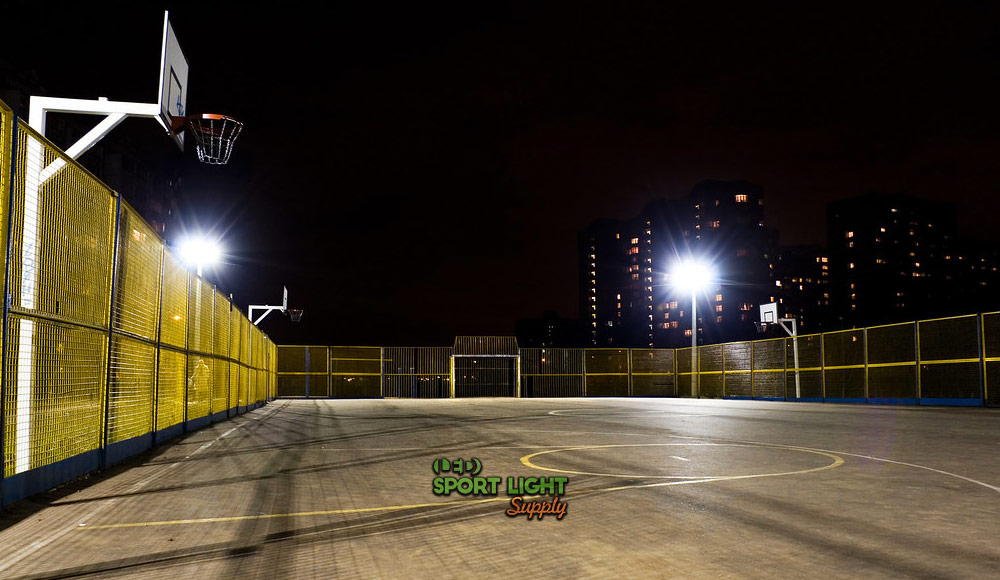
If you opt for high mast lighting, do not install excessively high poles without a valid reason. On average, 30 feet are more than enough to illuminate a standard basketball arena. Even the official NBA basketball courts are not wider than 50 feet. In case you cannot install high masts on both sides, opt for spotlights or use mobile light towers.
Maintenance will cost you more because of the use of special equipment. Plus, the dangers of working at height are obvious. For starters, there is the possibility of falling. But the available space may be cramped as well. The pole’s height could pose a threat to anyone below it. During maintenance, drop tools or objects can hit spectators or players.
When the basketball light pole is too tall, you may have to consider ways to rescue the repairer. Of course, a maintenance company would take care of most of the maneuvers. But you still have to think ahead and plan to have space around the pole for machinery or special equipment.
Uniformity, light loss, and energy wastage
Without a doubt, a tall light pole can help improve lighting uniformity. This means that the light distribution in the basketball stadium is ideal. After all, the light falls on the arena from above, thus covering more playing surface. But at the same time, light loss becomes a decisive factor.
The light output does not remain constant throughout the fixtures’ life span. What is more, each light pole has its own light loss characteristics. Bad weather will also force a light output depreciation over time. So, regular cleaning and light bulb replacement are crucial activities to be considered.
Even if you use LED lights, maintenance routines still apply. LED products have a superior life span and are more cost-effective. Nonetheless, without proper maintenance, energy wastage is sure to follow. Just think of the luminaire dirt depreciation. That is, when the fixtures are so dirty that the light does not filter through the lens.
In the end, you will need more light sources to counteract the light loss factor. You will spend more money and still have to clean more lights than necessary periodically.
Glare issue
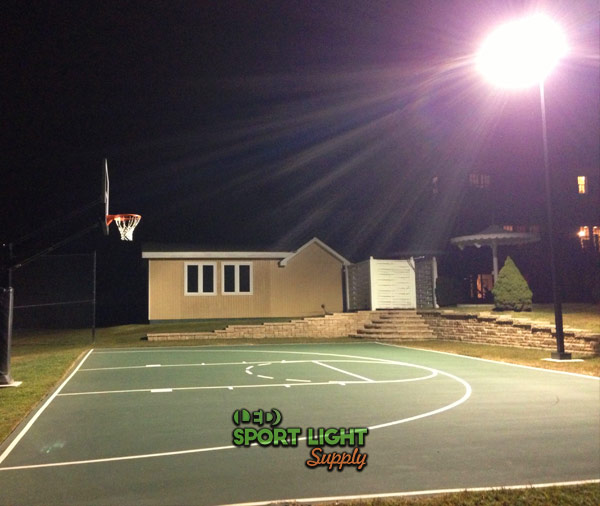 A short distance between the light sources and the ground promotes glare. During a basketball game, the offensive and defensive organization of the team imposes tactical strategies. The point guard needs visual acuity to get the ball into the other team’s half and run the offense. Of course, the shooting guard shoots from long distances but also plays within the key.
A short distance between the light sources and the ground promotes glare. During a basketball game, the offensive and defensive organization of the team imposes tactical strategies. The point guard needs visual acuity to get the ball into the other team’s half and run the offense. Of course, the shooting guard shoots from long distances but also plays within the key.
Every role will glance around and up from time to time. So, in an outdoor basketball stadium, a short light pole with bright lights can blind the players. Taking long shots or break into the key could become hard. Even if the luminaries point downward, their luminous glow can distract outer players behind the three-point line. Mainly because they need to concentrate on both dribbling and delivering a pass at the right time.
You can buy and install a glare shield. But if the light pole is too short, illuminance will suffer. The ratio between the high mast height and tilt of the luminaries must ensure comfortable vision and a suitable lux level for play.
Safety concerns related to short basketball court light poles
If the light poles are too short, the light may burn the players, referees, and even spectators. Especially if you use traditional light bulbs instead of LED lights. For instance, a Metal Halide bulb can reach a temperature higher than 1500 degrees Fahrenheit easily.
When HPS or gas-discharge lamps get so hot, they may explode. A single blazing fragment can cause a fire. If the fragment falls onto a person, it can cut or blister the victim.
Old lamp types also emit ultraviolet rays. As you might know, long exposures to UV light can damage the skin and eyesight. This is why switching to LED lights or retrofitting old fixtures is always a good idea.
Besides overheating, traditional light bulbs can become so hot that you need to wait before you can replace them. The cool-down time of old MH and halogen bulbs can take up to 15 minutes. So, the only benefit of having short poles is that replacing them will be somehow faster than replacing lamps on taller supports.
If the lighting layout in your basketball stadium has many short light poles already, try using LED lights with an equivalent or lower light output. After that, compensate for the best illuminance level by using a LED spotlight from a bigger distance.
Wiring and structural issues
Sometimes, whether you opt for a tall or a short high mast is not a problem per se. In fact, the quality of the high mast could pose an issue. For example, steady winds or site-specific characteristics may cause structure fatigue.
When the lighting layout does not consider critical factors like materials and location, the light pole might snap or bounce back and forth. From a technical perspective, a harmonic motion or vibration attacks the weakest link in a bass welded plaque. Or a casting welded end or connector. With time, cracks may form and cause failure or accidents.
An underloaded pole is also an issue. To be precise, an expert designer will choose the correct light pole height by considering all the variables. For example, the basketball court lighting standard and the stadium size.

